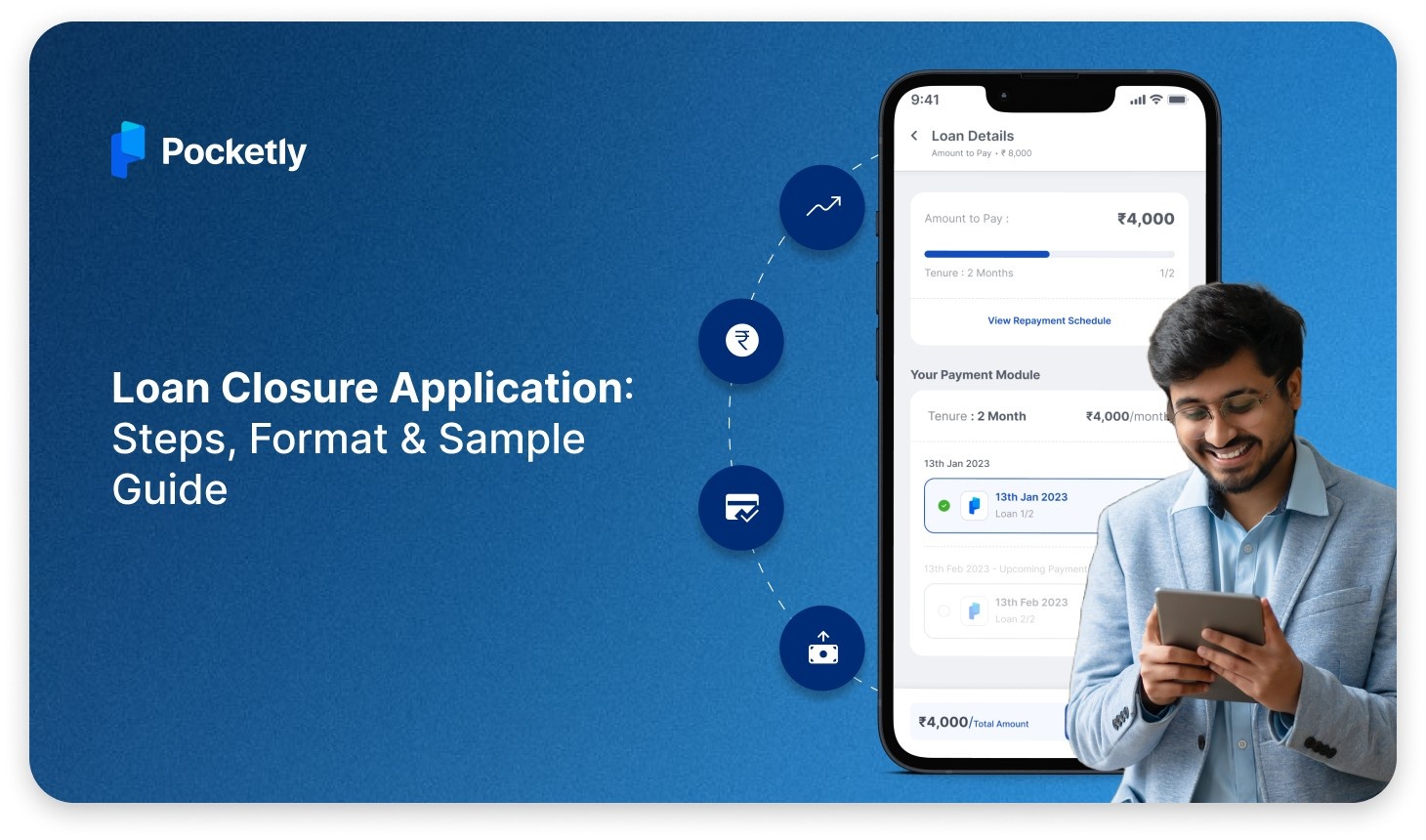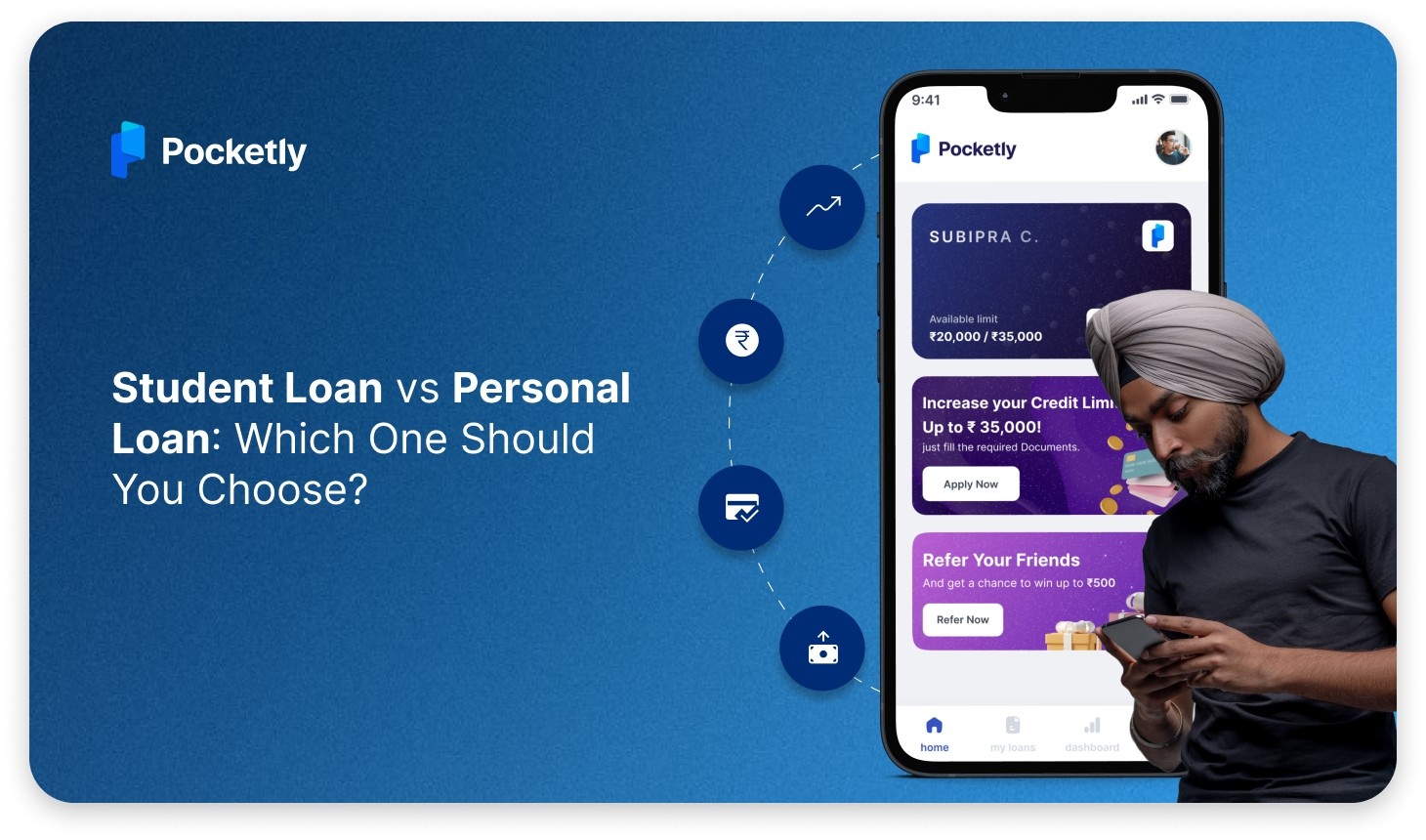
Loans are a part of life, whether you're pursuing higher education, purchasing a car, or funding your dream business. But have you ever considered that the repayment method you choose can make all the difference in managing your financial future?
Let’s say you’re just starting out in your career and taking on a personal loan. Do you want the flexibility of paying more later, as your salary increases, or prefer consistent monthly payments that you can plan for? Understanding these options is key to keeping your finances healthy and stress-free.
In this guide, we'll break down different loan repayment methods, so you can choose what works best for you. Each method offers its own benefits, whether you value flexibility, low monthly payments, or getting debt-free quickly. Let’s dive in!
What is Loan Repayment?
Loan repayment is all about returning the money you borrowed, along with the interest charged for using those funds. When you take a loan, you’re not just repaying the amount you borrowed (the principal), but also the interest on top of that.
- Principal: This is the actual amount you borrowed.
- Interest: The extra cost you pay for borrowing that money.
You’ll typically repay these in intervals—whether monthly, quarterly, or annually—and sticking to these terms is key to avoiding late fees or penalties!
Importance of Loan Repayment
Repaying your loan on time isn’t just about ticking off a financial obligation—it’s about building your financial credibility and future. Whether it's a student loan, personal loan, or home loan, sticking to repayment schedules sets you on the path to financial security and trustworthiness.
Here’s why loan repayment is essential:
- Builds Your Credit Score: Timely repayments boost your credit score, making it easier to get loans with better terms in the future.
- Avoids Penalties: Missing payments leads to penalties, which can snowball into higher financial stress.
- Financial Discipline: Staying consistent with repayments promotes better financial habits and teaches responsibility.
- Future Loan Approvals: Lenders trust borrowers with a solid repayment history, making future borrowing easier.
- Mitigates Debt Burden: Regular payments decrease the interest owed, allowing more of your payment to go toward the principal and speeding up debt freedom.
- Preserves Valued Assets: For secured loans, timely repayment ensures that valuable assets like your home or car remain safe from repossession.
Making sure you repay your loans on time is key to not just clearing your debt but also shaping your financial future!
How Loan Repayment Works
Loan repayment may seem complicated, but it boils down to a simple process. You borrow money (the principal) and agree to pay it back with added interest over a set period. Here’s a breakdown of how it works:
- Monthly Payments: Most loans are repaid in monthly installments, which include both the principal and interest.
- Interest: Each payment consists of a portion toward interest (the cost of borrowing money) and another toward the loan’s principal balance.
- Repayment Tenure: Loan terms vary, typically ranging from months to years, depending on the type of loan.
- EMI Calculation: Equated Monthly Installments (EMIs) are calculated based on the loan amount, interest rate, and repayment period.
Making regular payments on time, you gradually reduce the outstanding balance until the loan is fully repaid.
Types of Loan Repayment Methods in India
India’s dynamic financial market provides a range of repayment options designed to suit different financial situations and goals. Let’s dive into the common types and what they offer:
Equated Monthly Instalments (EMI)
This is the most widely used method. With EMI, you make fixed monthly payments that include both principal and interest. It’s great for those who value predictability and want a stable repayment plan. Since you know exactly how much you’re paying each month, budgeting becomes much easier.
- Key Feature: Predictable fixed monthly payments.
- Best For: Individuals who prefer a steady and manageable repayment schedule.
Step-Up Repayment
Ideal for those early in their careers or expecting a salary increase, the step-up repayment method begins with lower EMIs and gradually increases. This allows borrowers to ease into their loan without the stress of high initial payments, making it more affordable in the beginning.
- Key Feature: Low initial EMIs that increase over time.
- Best For: Young professionals with expected future income growth.
Step-Down Repayment
The opposite of step-up repayment, this method starts with higher EMIs that gradually decrease. It’s great for people with higher income upfront or those expecting lower earnings in the future, like individuals nearing retirement.
- Key Feature: Higher EMIs at the start, lower over time.
- Best For: Borrowers with high current income or those preparing for retirement.
Balloon Repayment
For business owners or those anticipating future income boosts, balloon repayment allows for smaller monthly payments throughout the loan term, followed by a large lump-sum payment at the end. It helps with cash flow management, making it suitable for loans linked to uncertain future earnings.
- Key Feature: Small EMIs with a significant final payment.
- Best For: Business owners or people expecting large income in the future.
Bullet Repayment
In this method, you only pay interest throughout the loan tenure and repay the entire principal in a single payment at the end. It’s a good option for short-term loans or specific loans with bullet repayment clauses.
- Key Feature: Interest-only payments with a lump-sum principal payment at the end.
- Best For: Short-term borrowers with uneven or unpredictable cash flow.
Flexible Loan Repayment
Some lenders allow flexibility in adjusting your EMI based on changes in your financial situation. This method is great for those facing temporary financial setbacks or expecting changes in their income.
- Key Feature: Adjustable EMI amounts based on your financial health.
- Best For: Individuals who need flexibility in payment plans.
Overdraft Facility
This is a useful feature for home loans or certain other loans where you can park surplus funds in the loan account. It helps reduce the outstanding principal, saving on interest.
- Key Feature: Ability to reduce principal with surplus funds, cutting interest costs.
- Best For: Those with home loans or those wanting to blend borrowing and saving.
Prepayment and Foreclosure
Borrowers can opt to pay off their loan before the tenure ends, which helps reduce the overall interest burden. Prepaying allows you to achieve debt freedom faster, provided there are no prepayment penalties from the lender.
- Key Feature: Paying off loans early, saving on interest.
- Best For: Individuals looking to clear debts faster and save on interest.
These varied repayment methods give you the flexibility to align your loan repayment with your financial goals, making it easier to manage your loans according to your circumstances.
Factors Affecting Loan Repayment
When repaying a loan, several factors come into play that can affect how smoothly the process goes. Here’s an overview of key elements to keep in mind:
- Interest Rates: Higher interest rates mean higher monthly payments, increasing the total cost of the loan. Low rates make repayment more affordable.
- Loan Tenure: Shorter loan periods reduce the total interest paid but raise the monthly installments. Longer tenures spread payments over time but result in paying more interest overall.
- Income Stability: A steady and reliable income is key for maintaining timely payments. If your income fluctuates, it can disrupt your repayment schedule, increasing the likelihood of default or late payments.
- Prepayment Options: Some loans allow for early repayment without penalties. Prepaying reduces the loan’s tenure and the total interest owed, providing financial relief faster.
- Additional Fees: Fees such as late payment penalties, processing fees, or prepayment charges can add to the total repayment burden, so it’s essential to account for these when planning.
- Credit Score: A good credit score can secure better loan terms and lower interest rates, making repayment easier. Conversely, poor credit scores may lead to higher rates and stricter terms.
Looking to apply for a loan without caring about a good credit score? Read our guide on Applying for Urgent Personal Loans with a Low Credit Score.
Understanding these factors can help you choose the most suitable repayment plan and manage your loan responsibly.
In the long run, maintaining a good repayment track record supports a stable and secure financial future.
How Does Repaying a Loan Affect Your CIBIL Score?
Repaying a loan affects your CIBIL score by showcasing your financial reliability. Regular and on-time payments positively impact your credit score, while delayed or missed payments can harm it.
- Credit Score: Regular, timely payments help improve your CIBIL score, making you appear more creditworthy.
- Easier Loan Approvals: A higher score enhances your chances of securing future loans with better terms.
- Better Interest Rates: A strong CIBIL score often results in more favorable interest rates.
- Late Payments Impact: Missed or delayed payments negatively affect your score, leading to challenges in future borrowing.
- Improved Credit History: Consistent repayments over time contribute to building a positive credit history.
Let’s explore the steps to calculate the loan repayment procedure.
Step-by-Step Guide to Calculate Your Loan Repayment
Here's how you can easily calculate your loan repayment:
- Gather Loan Details: Know the principal amount, interest rate, and loan tenure.
- Identify the Formula: The most common is the EMI (Equated Monthly Instalment) formula used for calculating repayments.
- Calculate the Monthly Repayment: Use the formula to determine your monthly payment.
- Include Extra Costs: Don’t forget to factor in any additional costs, like processing fees or insurance.
- Use a Loan Repayment Calculator: To simplify things, use an online calculator that allows you to input all details and gives you quick, accurate results.
Following these steps makes it easier to plan for your loan and manage your finances smoothly!
Loan Repayment Strategies
Effectively managing loan repayment can save you money and reduce financial stress. Here are some strategies to ensure you stay on top of your loans:
- Use Surplus Funds for Prepayment: If you receive a bonus or extra income, use it to prepay your loan. This helps reduce the principal and cuts down on interest costs over time.
- Set Up Auto-Debit: Automate your EMI payments through your bank to avoid missed payments and penalties. This ensures that repayments are always on time without any hassle.
- Explore Refinancing: If interest rates drop or you find better loan terms, consider refinancing your loan. Be sure to calculate any refinancing fees or new loan terms to ensure you’re saving money in the long run.
- Consider Loan Insurance: Protect your family from financial burdens in case of unforeseen events like death or disability. Loan insurance covers repayments, ensuring that the loan is settled even during unfortunate circumstances.
- Review Your Budget Regularly: Continuously evaluate your income and expenses to ensure your loan repayment plan aligns with your current financial standing. This can help you avoid potential financial strain.
With a proactive approach and by using these strategies, you can pay off your loans efficiently and maintain healthy financial stability.
If calculating loan repayments and managing large loans seems complex, you can explore easier, quicker options for short-term financial needs.
If you are still confused and want to learn more about short-term finance, check out our Guide on Types of Short-Term Sources of Finance.
Pocketly offers a user-friendly platform to secure instant loans with minimal hassle. Whether you need a small loan or a flexible repayment plan, Pocketly makes borrowing easy, ensuring you stay on top of your finances!
Let’s understand why Pockelty can be your go-to choice for an instant personal loan. Keep reading, folks!
Why Pocketly is Your Go-To Choice for Instant Personal Loans
Imagine needing quick cash without the hassle of complicated paperwork—Pocketly makes that possible. Whether it’s for an unexpected bill, a last-minute plan, or even an emergency, Pocketly steps in like a trusted friend.
Key Features:
- Instant Approval: Apply and get your loan disbursed in minutes.
- Loan Amounts: Borrow between ₹1,000 to ₹25,000, perfect for covering immediate costs.
- User-Friendly App: The intuitive interface ensures a seamless experience, from applying for a loan to tracking your repayments.
- No Hidden Fees: Transparency is key—no unexpected charges!
- Student-Friendly: Even if you’re 18+ and a student, you can apply.
The best part? The flexibility. You can choose repayment terms starting from 1 to 6 months, making it easier to fit the loan around your financial comfort zone.
How to Apply for a Personal Loan from Pocketly
Pocketly makes the process fast and stress-free for salaried individuals. Here’s how you can apply:
- Download the Pocketly App: Start by downloading the app from the Play Store or App Store, and sign up using your mobile number.
- Provide Basic Details: Enter information such as your name, address, and employment details.
- Choose Loan Amount & Tenure: Select your loan amount, ranging from ₹1,000 to ₹25,000, and the repayment tenure.
- Upload Documents: Submit minimal documentation like ID proof and salary slips through the app.
- Approval & Disbursal: Once verified, the loan amount is credited to your bank account instantly.
Pocketly makes borrowing simple and stress-free, ensuring you have access to funds exactly when you need them.
Conclusion
Managing finances with the right tools makes all the difference when unexpected expenses arise. Pocketly stands out as your go-to solution for instant personal loans, offering everything from quick approvals to flexible repayment plans tailored to your lifestyle. Whether you're a student or young professional, Pocketly ensures that accessing funds is easy and stress-free.
With transparent terms, no hidden fees, and a seamless user experience, Pocketly truly has your back.
Ready to simplify your finances? Download Pocketly today and experience yourself!
FAQs
What is the method of repayment?
The method of repayment refers to the way borrowers pay back loans, typically through scheduled installments, which include both the principal and interest amounts.
What are the methods of repayment of business loans?
Business loan repayment methods include:
- Equated Monthly Instalments (EMI)
- Bullet repayment (lump-sum at the end)
- Overdraft facility (pay interest only on used amount)
What is the repayment method of the term loan?
Term loans are usually repaid in fixed EMIs over a set period, covering both principal and interest.
Types of loan repayment methods in India?
In India, repayment methods include:
- EMI
- Step-up repayment
- Bullet repayment
- Balloon repayment
How does Pocketly make repayment easy?
Pocketly offers a range of repayment options, with terms ranging from 1 to 6 months, ensuring flexibility. The app's clear schedules and easy-to-track repayment methods make it a hassle-free experience.
Is Pocketly suitable for students?
Absolutely! Pocketly is student-friendly and accessible for individuals aged 18 and above, offering small loans with manageable repayment terms. It’s an ideal solution for students looking for quick financial support without complicated processes.















